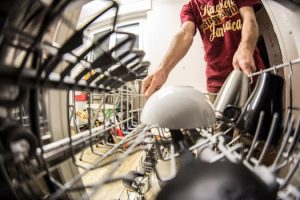Motion Sensors That Trigger Home Automation
Home automation has made many technological advancements in recent years, making it easier than ever to control various aspects of our homes with the touch of a button. One of the most popular features of home automation is the use of motion sensors, which trigger actions based on movement within the home. These sensors are not only convenient, but they also increase home security and energy efficiency. In this article, we will explore the world of motion sensors and how they can be used to trigger home automation.
The Basics of Motion Sensors
Motion sensors are electronic devices that can detect movement in a specific area or space. They work by detecting changes in infrared energy patterns, which are emitted by warm objects such as humans and animals. There are different types of motion sensors, including passive infrared (PIR) sensors, ultrasonic sensors, and microwave sensors.
Passive Infrared Sensors (PIR)
PIR sensors are the most commonly used type of motion sensors in home automation. They are affordable, reliable, and easy to install. PIR sensors detect changes in temperature and movement within their range. Once motion is detected, the sensor sends a signal to the home automation system, triggering a programmed action.
Ultrasonic Sensors
Ultrasonic sensors emit high-frequency sound waves and detect changes in the frequency when objects move within their range. These sensors are highly sensitive and can detect even minor movements. However, they can be affected by sound waves from other sources such as air conditioners and ceiling fans, leading to false alarms.
Microwave Sensors
Microwave sensors operate by emitting microwave pulses and detecting changes in these pulses when objects move within their range. They are highly sensitive and can detect movement through walls and other obstacles. However, they are also prone to false alarms due to interference from other electronic devices.
Utilizing Motion Sensors in Home Automation
Motion sensors are a key component of a home automation system, as they can trigger various actions based on the presence or absence of movement. Some common applications of motion sensors in home automation include:
Lighting Control
One of the most popular uses of motion sensors is for controlling lighting in a home. By installing motion sensors in different areas of the house, the lights can automatically turn on when someone enters the room and turn off when there is no movement detected. This not only saves energy but also provides convenience and a sense of security.
Security Systems
Motion sensors are an integral part of home security systems, alerting homeowners of any suspicious activity around their property. When integrated with a home automation system, the sensors can trigger actions such as turning on lights, sounding an alarm, or sending a notification to a homeowner’s smartphone.
Energy Efficiency
Motion sensors can also be used to reduce energy consumption in a home. For example, in rooms that are not frequently used, such as a guest bedroom or basement, the lights can be set to automatically turn off after a certain period of inactivity. This ensures that lights are not left on unnecessarily, saving energy and lowering utility bills.
Finding the Right Motion Sensor for Your Home
When it comes to choosing the right motion sensor for your home automation system, there are a few factors to consider:
Range
The range of a motion sensor determines the distance at which it can detect motion. A sensor with a short range is better suited for smaller rooms, while a sensor with a longer range is ideal for larger areas.
Sensitivity
The sensitivity of a motion sensor determines how easily it is triggered. Higher sensitivity is better for security applications, while a lower sensitivity is suitable for energy-saving purposes.
Integration
It is essential to choose a motion sensor that is compatible with your home automation system. Most sensors work with popular home automation platforms such as Google Home and Amazon Alexa.
Motion Sensors: A Must-Have for Home Automation
Motion sensors are an essential element of home automation, adding convenience, security, and energy efficiency to our homes. With a variety of sensors to choose from, it is easy to find one that fits your specific needs. Whether you are looking to control your lighting, enhance your security, or save energy, motion sensors are a must-have for a fully automated smart home.
In Conclusion
Motion sensors are a game-changer in the world of home automation. They make our lives more comfortable, safer, and more energy-efficient. With the right sensor and a well-integrated home automation system, you can control various aspects of your home with just a motion. Get ready to step into the future of smart living with motion sensors that trigger home automation.










